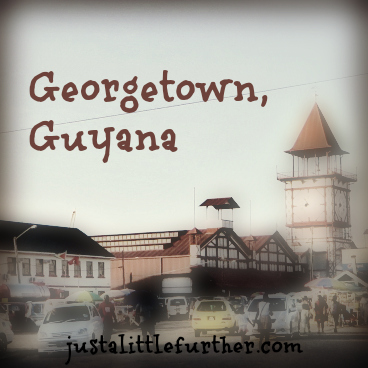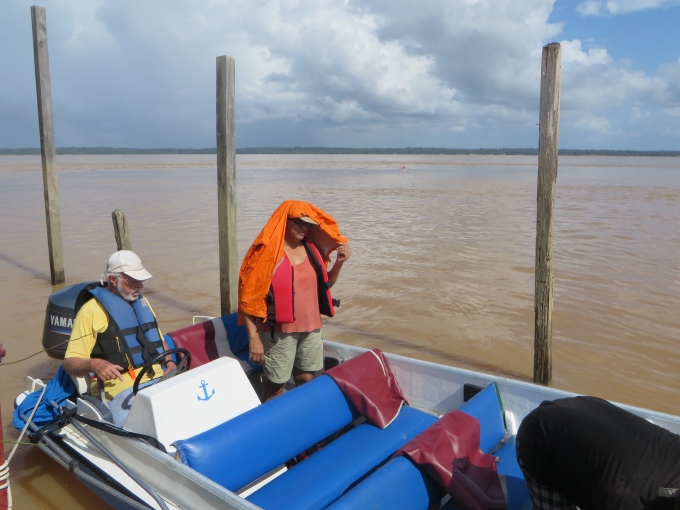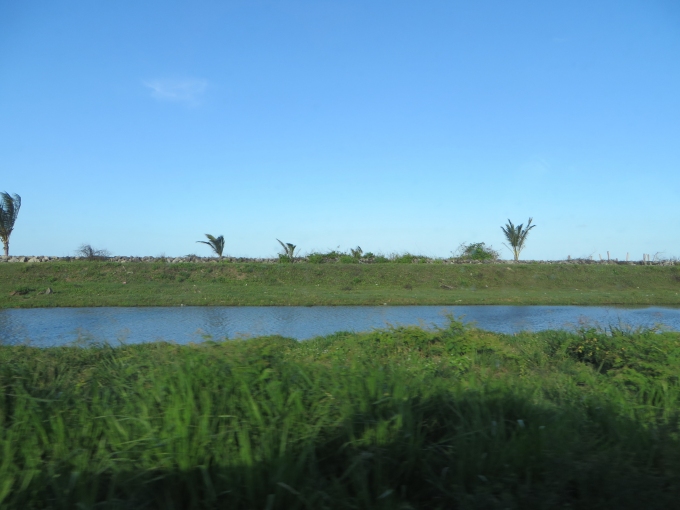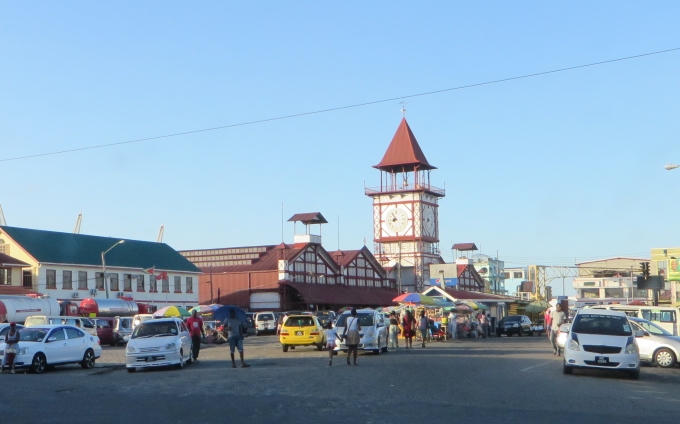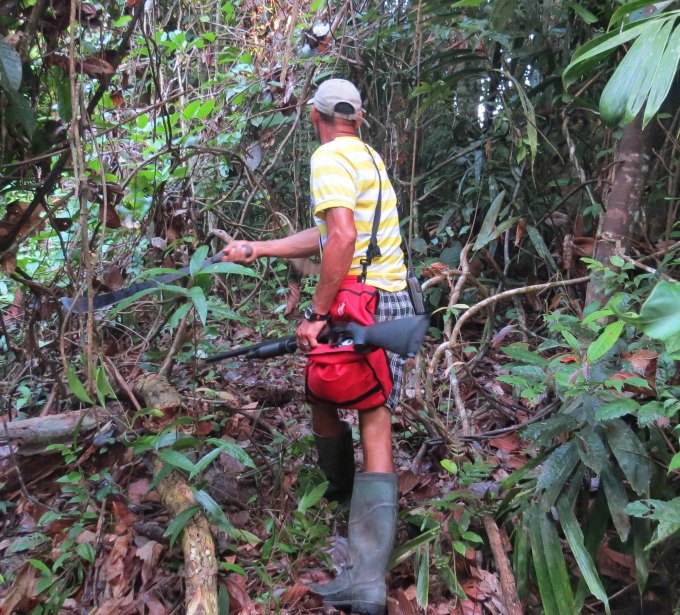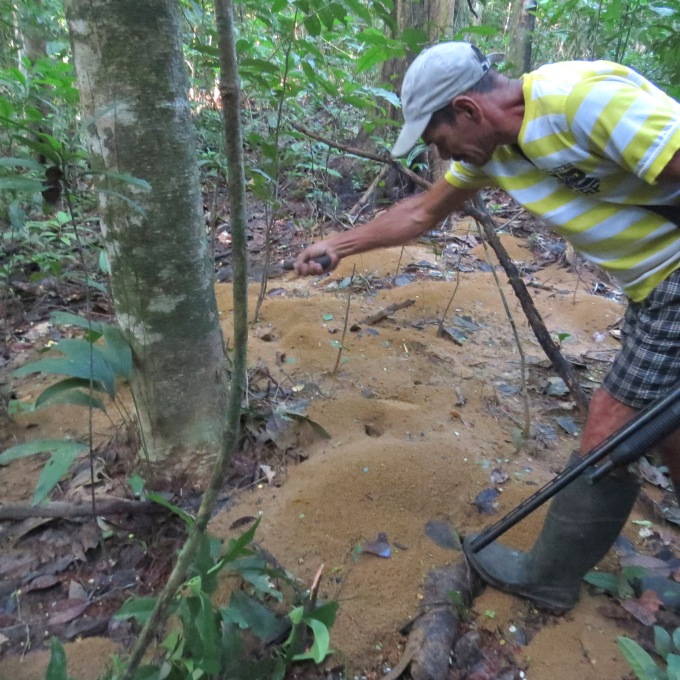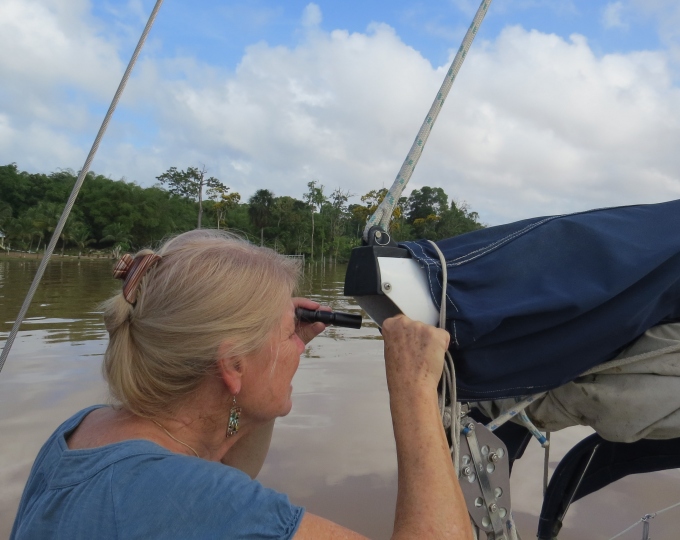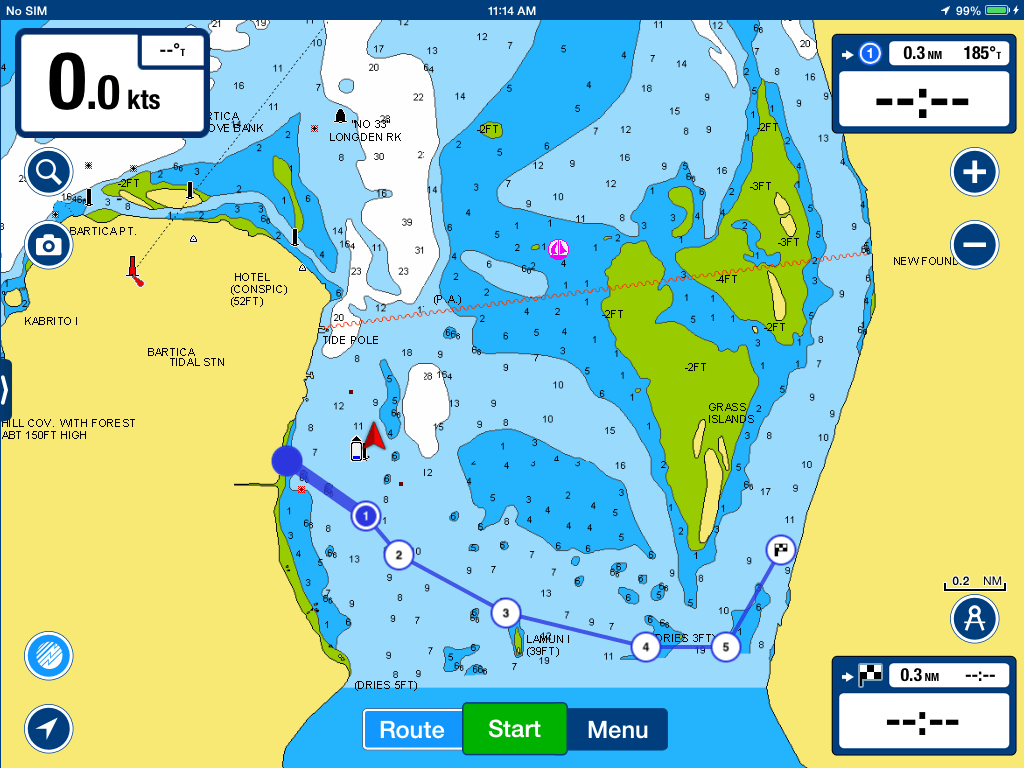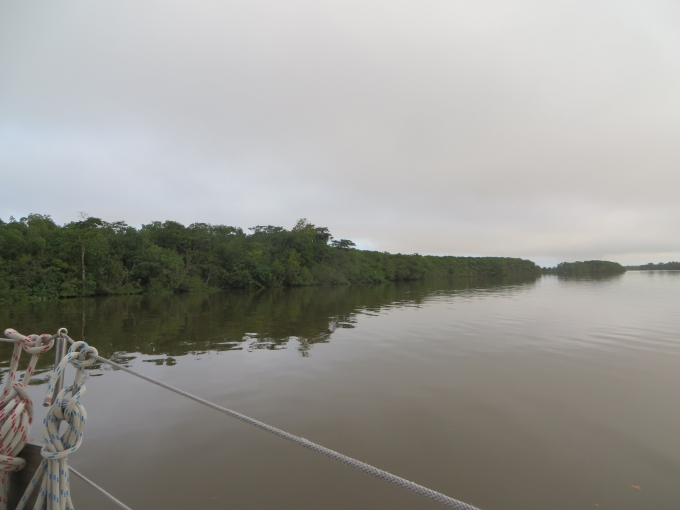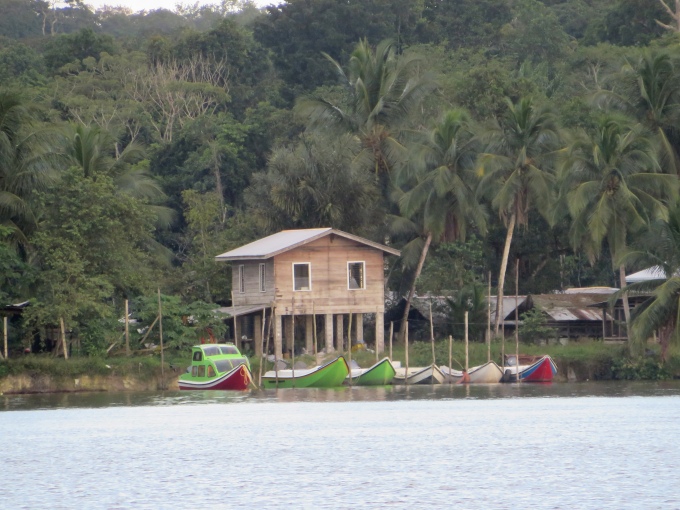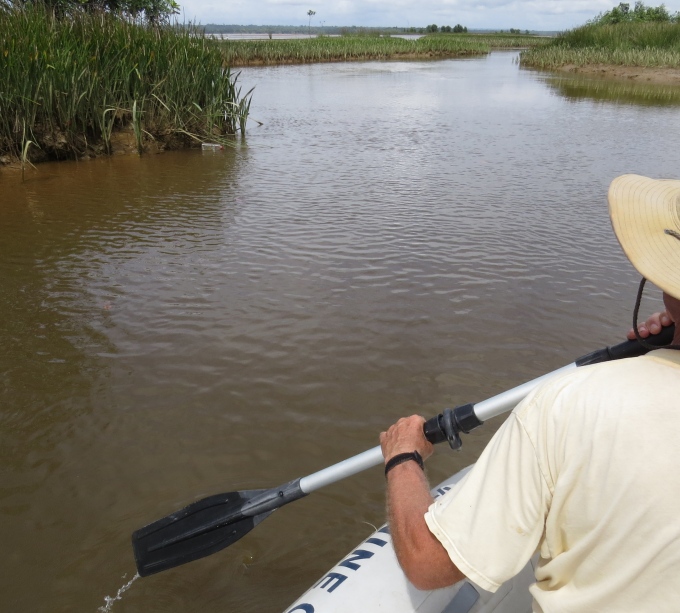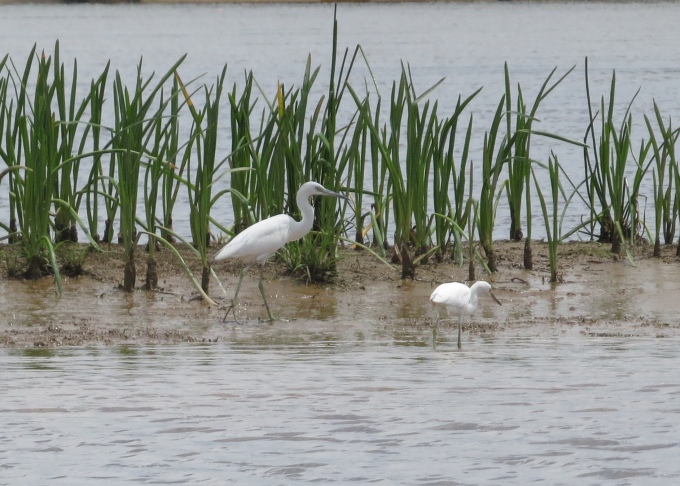Georgetown, Guyana's Capital - Pt. 1
/Getting there
Lonely Planet describes Guyana's capital city, Georgetown, as “dirty, expensive and dangerous.” With such an appealing reputation, we felt obligated to visit... if only to compare it to Colon, Panama, currently at the top of our “dirty, dangerous, least-liked” city list. We were up for some adventure and decided to spend a couple of days in Guyana's Big Smoke.
Getting to Georgetown from Hurakabra is usually a challenge, but we lucked out. We left Cups on the hook under the watchful eyes of Mike, the Hurakabra caretaker, and hitched a ride to Georgetown with Kit and Gem.
They have a “fast boat” which ate up the miles downriver pretty quickly … 35 miles at 35mph...jarring a few fillings loose along the way. Kit's boat was being hauled out at the Roeden Rust Marina in less than an hour.
Once the boat was hauled and stowed, we offloaded gear and Gem's “jungle Christmas tree” and made tracks for Georgetown. You have to look hard in this pic for Gem's leafless, needle-less tree that David is tying on the roof of the truck. She plans to paint it white and put fairy lights on it. Scotch pines are pretty rare in Guyana.
Kit and Gem are both native Guyanese and there are no better tourist guides than locals. We passed through Parika, a port town along the Essequibo that we'd seen on our way upriver. Things always look different from the land side versus the sea side. There was a steady commentary from our hosts along the way which added color to the trip. The city and the entire coastal area is land reclaimed from the sea. It is all below sea level and a massive sea wall and canal system, originally constructed by the Dutch, protect the city from the sea. A large part of the national budget is spent maintaining the wall and pumping excess water out of the city and back into the sea.
We crossed over the Demerara Harbour Bridge, an 1.15mi (1851m), floating toll bridge which Kit referred to as a pontoon bridge. It's not high enough for most commercial vessels, and therefore, two of its 61 spans retract to allow larger vessels to pass … causing, of course, major traffic jams since it's the only land connection between the east and west banks of the Demarara River other than ferries.
As we entered Georgetown, we were greeted by a tall Christmas tree wishing us a happy holiday season. With temps in the 90s (30s), it was a shock to remember that it's Christmas time.
We passed several landmarks … City Hall, Stabroek Market, St. George's Cathedral, the High Court with Queen Victoria's statue presiding over the premises … all places we planned to visit during the next couple of days.
We had reserved a room at the Signature Inn … US$50/night with breakfast. Gem had assured us it was a reasonable place to stay. We were surprised to find the bright orange and lime green hotel in the middle of a Queenstown district neighborhood. It was, indeed, most acceptable. Air-conditioning, shower, high-speed internet and clean … we couldn't have asked for much more.
We basked in the cool, took showers, did some internet, found a little Creole restaurant nearby for dinner and cold beers, then returned to the cool and took second showers. Life is good in Georgetown at the moment.
Put on your walking shoes and come exploring Georgetown with us tomorrow.
The links in this post are affiliate links. We love Lonely Planet guide books and we find Trip Advisor very useful. If you click through and buy anything through these links or the links on the side of this page, we get a small commission and it costs you no extra money. Thank You!


